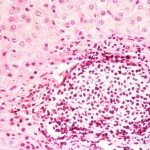Link to Pubmed [PMID] – 22095520
Antivir. Chem. Chemother. 2011;22(3):119-30
BACKGROUND: Because of high mutation rates, new drug-resistant viruses are rapidly evolving, thus making the necessary control of influenza virus infection difficult.
METHODS: We screened a constrained cysteine-rich peptide library mimicking μ-conotoxins from Conus geographus and a proline-rich peptide library mimicking lebocin 1 and 2 from Bombyx mori by using influenza virus RNA polymerase (PB1, PB2 and PA) and nucleoprotein (NP) as baits.
RESULTS: Among the 22 peptides selected from the libraries, we found that the NP-binding proline-rich peptide, PPWCCCSPMKRASPPPAQSDLPATPKCPP, inhibited influenza replicon activity to mean±sd 40.7%±15.8% when expressed as a GFP fusion peptide in replicon cells. Moreover, when the GFP fusion peptide was transduced into cells by an HIV-TAT protein transduction domain sequence, the replication of influenza virus A/WSN/33 (WSN) at a multiplicity of infection of 0.01 was inhibited to 20% and 69% at 12 and 24 h post-infection, respectively. In addition, the TAT-GFP fusion peptide was able to slightly protect Balb/c mice from WSN infection when administrated prior to the infection.
CONCLUSIONS: These results suggest the potential of this peptide as the seed of an anti-influenza drug and reveal the usefulness of the constrained peptide strategy for generating inhibitors of influenza infection. The results also suggest that influenza NP, which is conserved among the influenza A viruses, is a good target for influenza inhibition, despite being the most abundant protein in infected cells.

